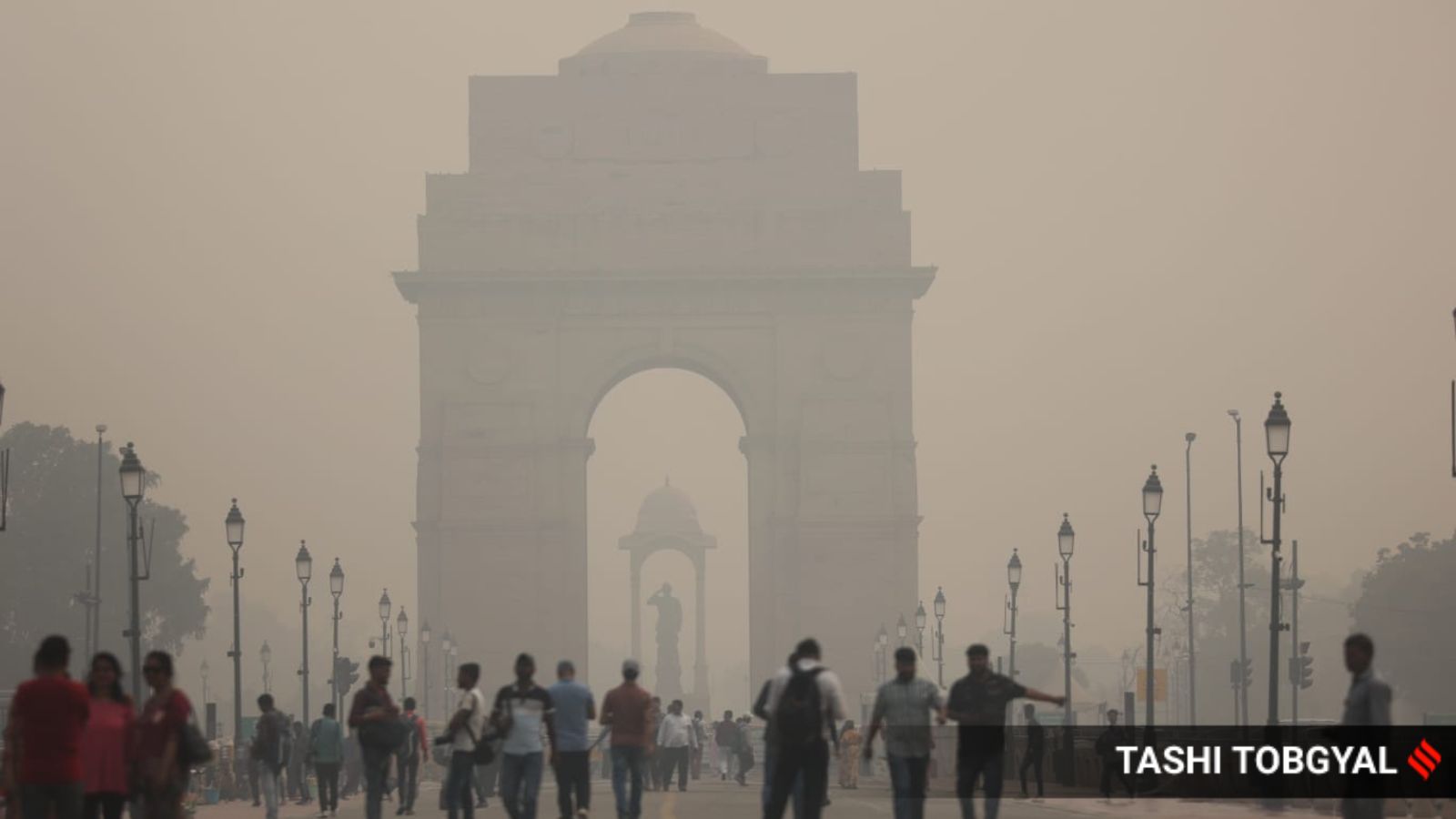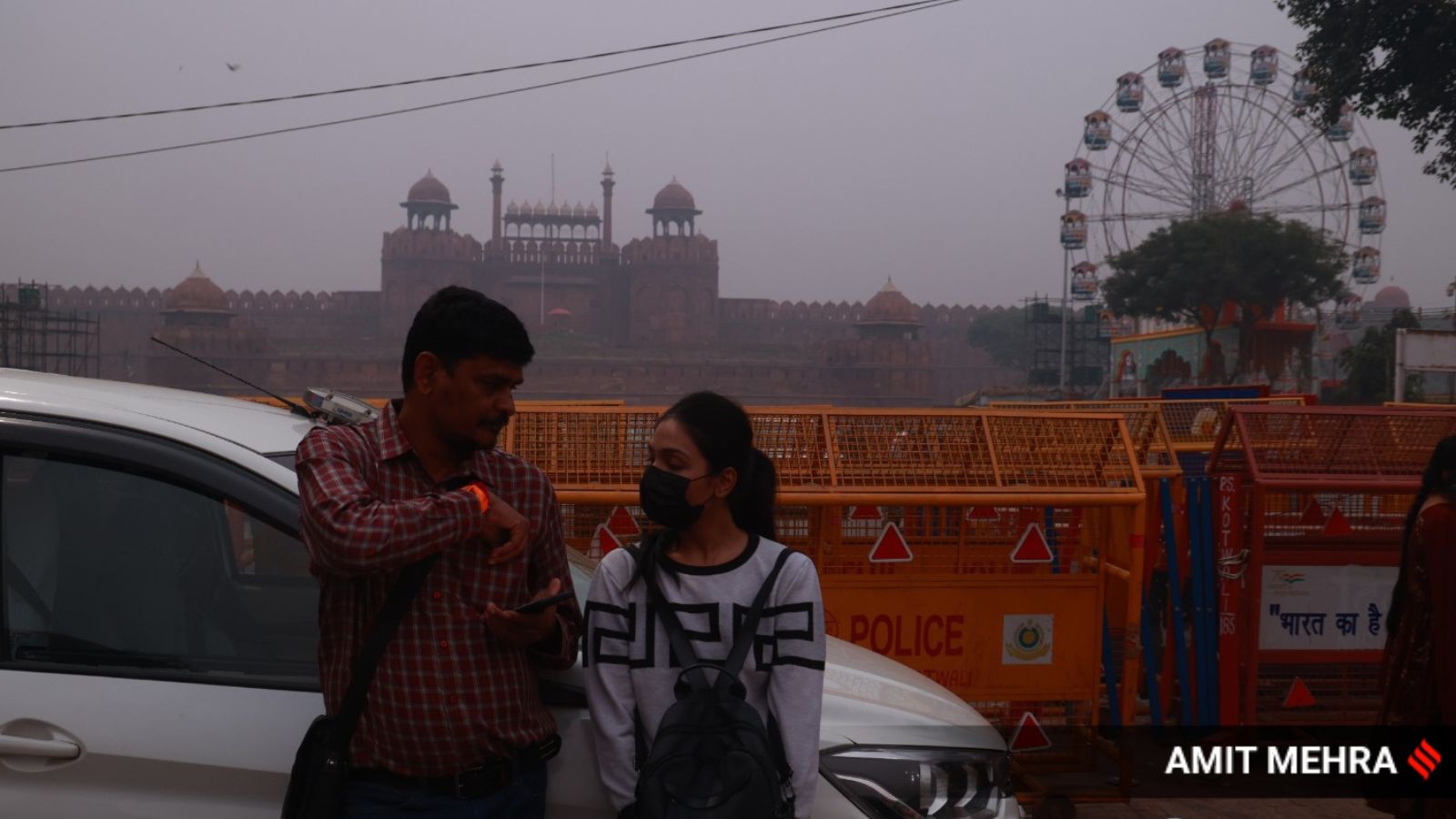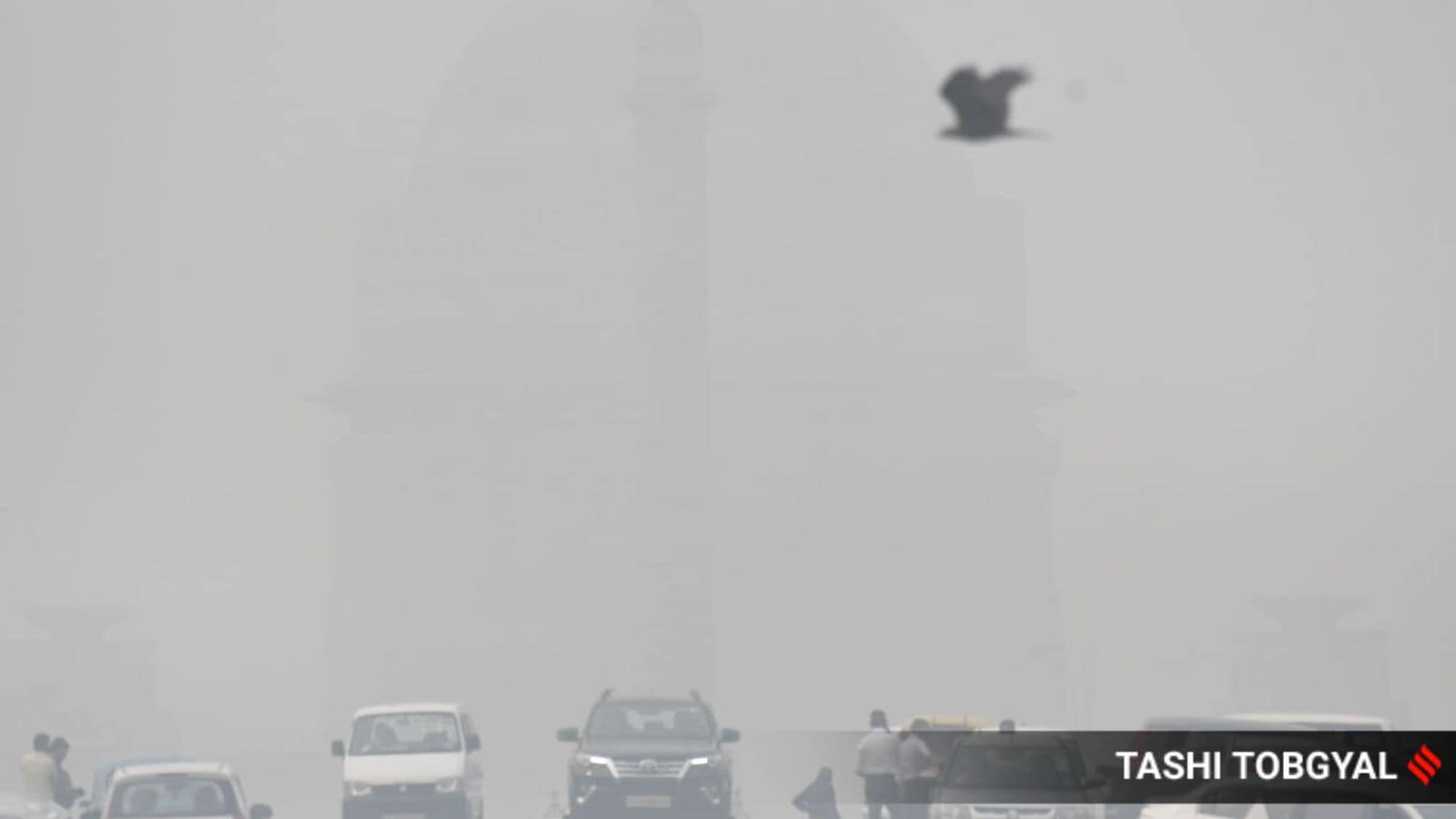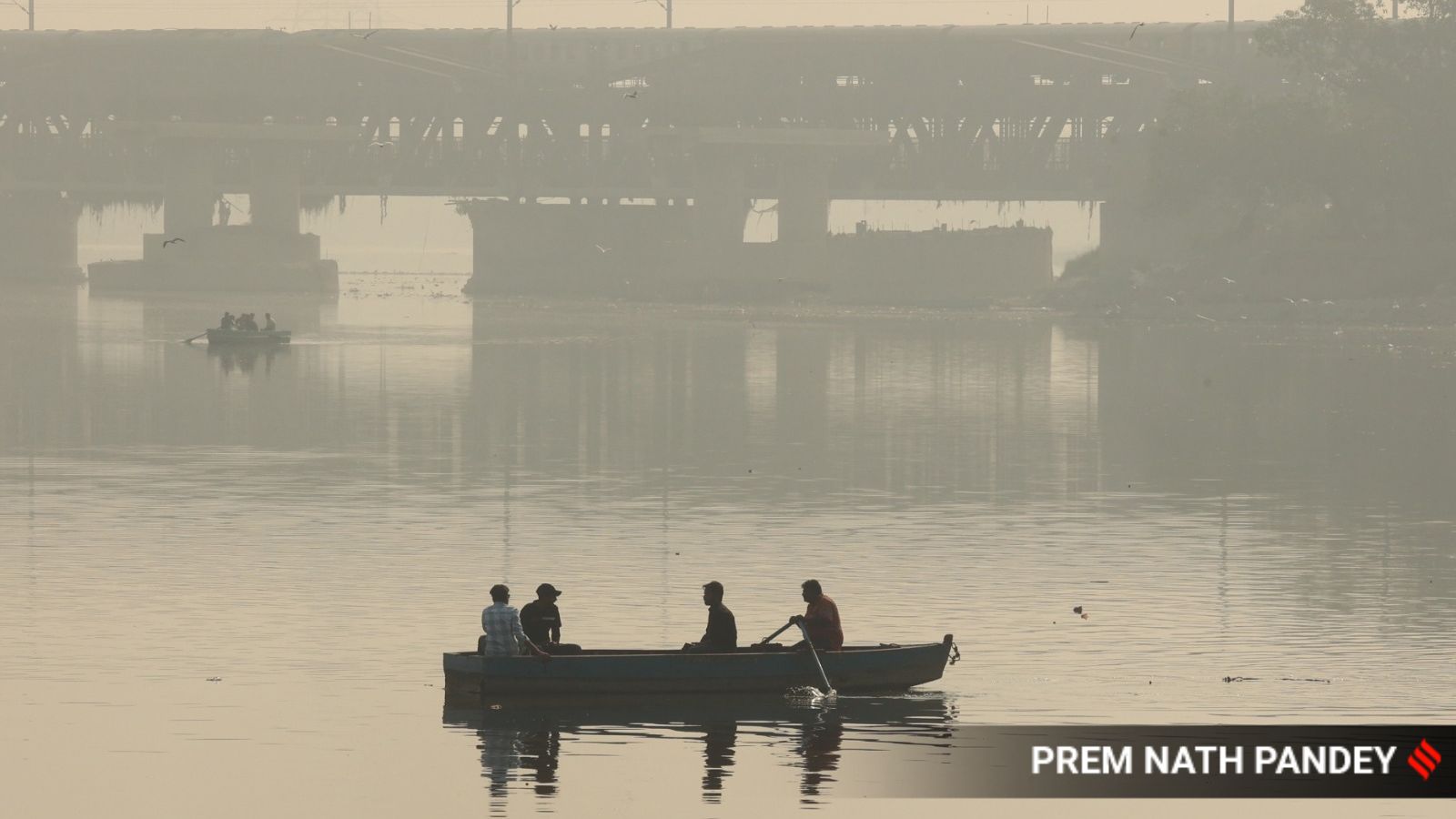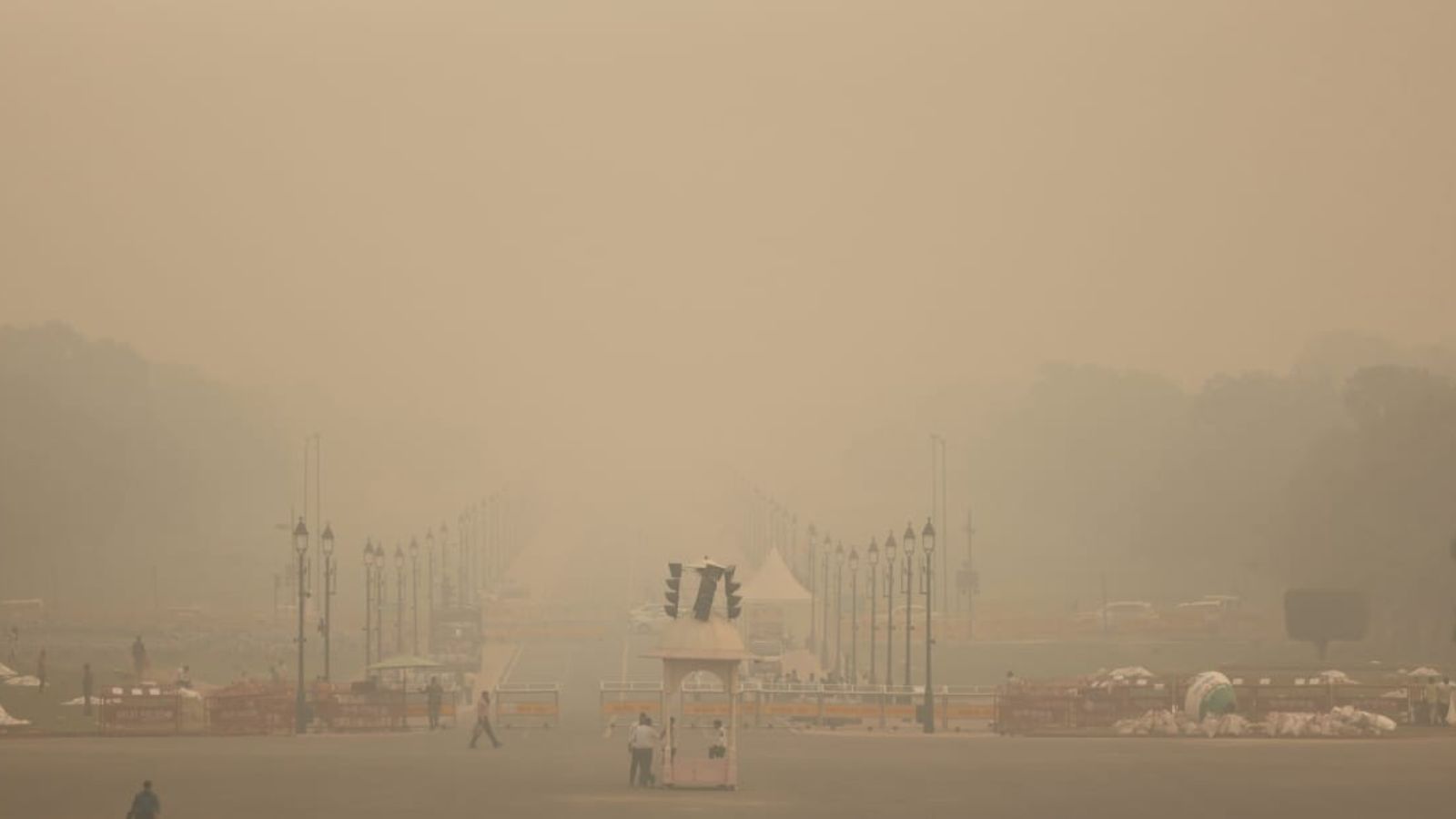Opinion Indians are choking on pollution. How can it be stopped?
Severe health consequences of air pollution cannot be mitigated by personal protection measures alone. Clean, public transport and rapid transition away from fossil fuels are needed
 There is growing concern about “ultra-fine particles” that are smaller than 0.1 microns in diameter and can bypass entrapment in the lungs to enter the bloodstream.(Illustration CR Ssaikumar)
There is growing concern about “ultra-fine particles” that are smaller than 0.1 microns in diameter and can bypass entrapment in the lungs to enter the bloodstream.(Illustration CR Ssaikumar) A recent report of the Air Quality Life Index (AQLI), published by Michael Greenstone from the Energy Policy Institute of the University of Chicago (EPIC), estimated that Indians were losing 5.3 years of life expectancy on average due to the health effects of air pollution.
The estimate for Delhi was worse, with life lost estimated to be 11.9 years. Apart from the impact on early death, high levels of disability and chronic illness are the penalties that polluted air levies for our folly of fouling the environment.
Delhi features at the top or near the top of the world’s most polluted cities, with Wuhan and Lahore sometimes relieving us of the dubious distinction of wearing the carbon crown. However, Delhi is not alone among the Indian cities. In a 2022 list of the 50 most polluted cities put out by IQAir, a Swiss air quality information platform, 39 of them are Indian. Rural areas too are not free of pollution, as dust from unpaved roads and smoke from burnt biomass fuels meet fossil fuel emissions of vehicular intrusions from encroaching modernity.
Pollutants that are monitored for air quality include particulate matter less than 10 and 2.5 microns per cubic metre (PM 10 and PM 2.5 respectively), nitrogen dioxide, sulphur dioxide, carbon monoxide, ozone, ammonia and lead. Besides these, benzene and formaldehyde from wildfire emissions can lead to cancer. Cadmium too is an air pollutant, especially from cigarette smoke. “Fine particulate pollution” refers to particles less than 2.5 microns being suspended in the air.
There is growing concern about “ultra-fine particles” that are smaller than 0.1 microns in diameter and can bypass entrapment in the lungs to enter the bloodstream.
National air quality standards in India are less rigorous than the WHO’s standards. For PM 2.5, the WHO sets a limit of 5 microns while India’s limit is 40 microns. India’s AQI has six categories: Good, satisfactory, moderately polluted, poor, very poor and severe. An AQI of 0-50 is rated as “good”, while “severe” represents an AQI of 401-500. Delhi is presently rated as “poor” (201-300), with predictions of further worsening when crop burning commences.
Even when Delhi reports a level of 126, it far exceeds national and WHO standards. It must be recognised that health harms from air pollution occur at even lower levels than the national standard, with a continuum of rising risk as pollutant levels increase. Prolonged exposure to air pollution even at AQI levels declared as “satisfactory” will have adverse health effects. We must aim to bring them as close to the WHO standards as possible. Presently, 22 states meet the national standards of AQI, while 15 do not. None meet the pristine WHO standards.
Geographically, the landlocked Indo-Gangetic plain has the highest levels of pollution as it lacks the dispersal that sea breeze brings to coastal areas. The problem is exacerbated during the harsh winter that much of this region experiences, as cold air does not flow easily to disperse pollutants. When agricultural crop residue is burnt during this period or when garbage is burnt by the urban poor to keep warm, a winter of discomfort ensues with very high AQI levels.
Sources of both ambient (outdoor) and household (indoor) air pollution are well recognised. Particulate matter comes from line sources (vehicles), point sources (power plants, factories), area sources (garbage dump sites, sewage treatment plants) and natural sources (forest fires, volcanic eruptions). Diesel fuel emissions, and road and construction dust are important contributors year-round, with stubble burning as a seasonal culprit. Household air pollution comes from the use of biomass fuels and open fire-cooking stoves. The sources of emissions vary across different regions of India and between urban and rural areas. Emission source apportionment and population exposure assessments are important for context-relevant control strategies.
Health harms of exposure to different pollutants are well documented in studies conducted in India and abroad. Acute effects like burning eyes, irritation of nose and throat, cough and feeling of choked breath are irksome but serious harm can arise from heart attacks and brain strokes, which are provoked when atherosclerotic plaques in blood vessels are disrupted by the pollutants, thereby triggering blood clots.
It is now known that long-term exposure to air pollution can raise blood pressure (hypertension), lead to cardiovascular, cerebrovascular and peripheral vascular disease, cause cancers, and raise the risk of diabetes, dementia and cataracts besides the well-recognised risks of chronic lung disease and asthma. Inflammation stoked by air pollution can damage many organs and lower immunity to infections. Particulate matter (PM 2.5) has been found in maternal placenta and foetal brains.
Exposure to air pollution during pregnancy increases the risk of stillbirths, neonatal deaths, low birth weight babies and birth defects. Children chronically exposed to air pollution have repeated respiratory infections, susceptibility to asthmatic attacks, lower learning ability and impaired physical growth.
Personal protection measures have only a limited impact. Air purifiers work only in a closed room and may be best used to protect persons who are confined there because of severe illness or disability. Masks have to be of very high quality (N95) to offer protection against many pollutants. It is best to avoid or reduce outdoor activity during smoggy periods. Breathing exercises help to maintain lung function.
More than these measures, the protection we need will come from clean transport (like electric vehicles), increased use of public transport in place of personal vehicles, rapid transition to renewable energy sources from fossil fuels, cessation of stubble and garbage burning, good construction practices and efficient debris disposal. Household air pollution is being addressed through the substitution of biomass with natural gas and better ventilation of kitchens.
Ambient air pollution needs to be tackled with even greater vigour if many Indians are not to be confined to homes or hospitals because the air outside has hurt their health. Proactive public policy, effective enforcement, vigilant monitoring and adaptive innovations responsive to reliable and regular data flows are needed to clear the air, clean our lungs and calm our blood vessels.
The writer is Distinguished Professor at PHFI and author, most recently of Pulse to Planet: The Long Lifeline of Human Health




